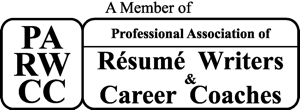You see that job posting online. You click "Apply Now". Then what happens?
Your resume usually gets entered automatically into an Applicant Tracking System (ATS). That's a fancy way of saying the database that corporate recruiters use to collect their candidate.
The ATS frequently saves a version of the resume you sent, and then also makes a version which pulls out the formatting and turns it into text. Why? Because it makes it easier for the system to store, and for people to search words in it.
Let's assume that you applied to a particular job opening. Your resume is entered alongside those of other people who have applied for that opening. Try to think of it like an email filter - for example, if you have one set up on your email that puts all emails with "Project Pokemon" (for lack of a better term) into a particular folder, you can find all your Project Pokemon emails in one place. An ATS does the same thing, except that it's all applicants to a certain job.
The corporate recruiter sees a real-time list of people who have applied. It could be hundreds - if not thousands - of applicants. To whittle this down and to save time, the recruiter may have put in some automatic filters of his or her own. For example, the criteria used may be structured as follows - candidates who live within 50 miles, and put a salary range of less than $x, and have indicated that they have used Microsoft Word may go into the "Yes" filter for further review. Those who don't meet all three of these criteria would go into the "No" filter automatically, and likely won't get reviewed for the job - sorry, no banana.
Then the recruiter really digs in, reviewing the resumes who are in the "Yes" filter. There's still usually a substantial pile of candidates. At this point, though, they start to see what's in the content of the resume. As the recruiter clicks on each profile, the ATS will usually display a window showing the top half of the first page of the resume. In realistic terms, this means it will show your name, address, objective, and the beginning of your current or most recent job. The recruiter decides to read further or not based up on what he or she sees in this window - if the fit isn't somewhat readily apparent, next resume.
From there, the recruiter pulls resumes of interest to screen. Assume they are generally in the neighborhood of four to six resumes for each position.
The recruiter calls the applicants and screens for fit - salary expectations, location, fit for the role, you name it. The stack of resumes whittled down to what are now three candidates (they are candidates because they have a realistic chance) to bring in for interview.
The three candidates come in for interviews. Manager really likes one of the candidates. It's one big happy, the candidate loves the company, they get an offer and accept, and they start, and everybody lives happily forever after. Or, at least until bonuses are paid out, the now-employee accepts an offer at a competitor, and the process starts all over again. Perhaps I may be getting cynical.
Did you notice the picture of the funnel? Are you still wondering why that's there?
It's because recruiting is often measured as a funnel. It starts off wide (large volume) at the top, and gets narrow (small volume) at the bottom. To illustrate:
Total Applicants - 500
Applicants meeting enough criteria to pass into "Yes" fiter - 150
Applicants selected for phone screen - 6
Candidates Interviewed - 3
Candidates Offered - 2
Candidates Accepted/Hired - 1
What can you do to make your journey through the funnel more successful?
Applyto jobs to which you are qualified
Make sure your resume is fleshed out enough that it has enough keywords to meet the criteria (Did you read the job description before you applied? Did it ask for Microsoft Project, and you didn't include it in your resume? If you don't get through, it's on you...)
Know your criteria and the market - compensation requirements, location, etc. You won't fit every job - your current pay and salary requirements may be way above those for the job. In which case, if nobody contacts you, nobody's wasting your time, either. By the way, several of the company ATS's have portals where you can log back in and see the status of your application
Front-load your resume with a clear, concise objective that matches the job requirements. Take out anything that doesn't sell you for the job (i.e., putting your penchant for fly-fishing up top when you're applying for a software engineering role. Then again, if you're applying for a job as a sales rep at a sporting goods company, play up those mad rod skills).
If the recruiter calls you, be prompt, respectful, and forthright. You made it this far, why blow it now?
Scott Singer is the President and Founder of Insider Career Strategies Resume Writing & Career Coaching, a firm dedicated to guiding job seekers and companies through the job search and hiring process. He is a Human Resources professional and staffing expert with almost two decades of in-house corporate HR and staffing firm experience, and is a Certified Professional Resume Writer (CPRW) and Certified Professional Career Coach (CPCC).
Insider Career Strategies provides resume writing, LinkedIn profile development, and career coaching services, including a free resume review. You can email Scott Singer at scott.singer@insidercs.com, or via the website, www.insidercs.com.




